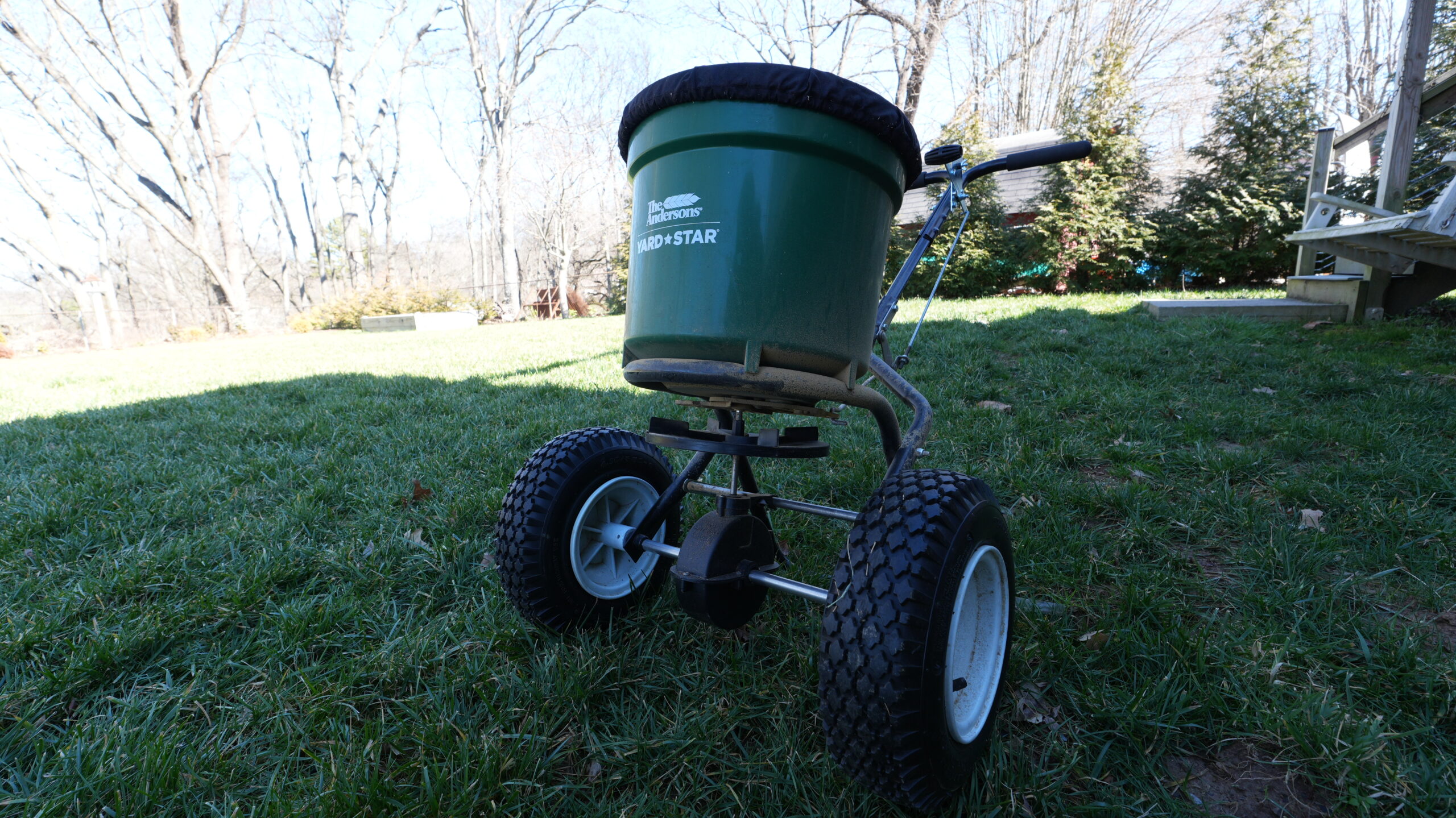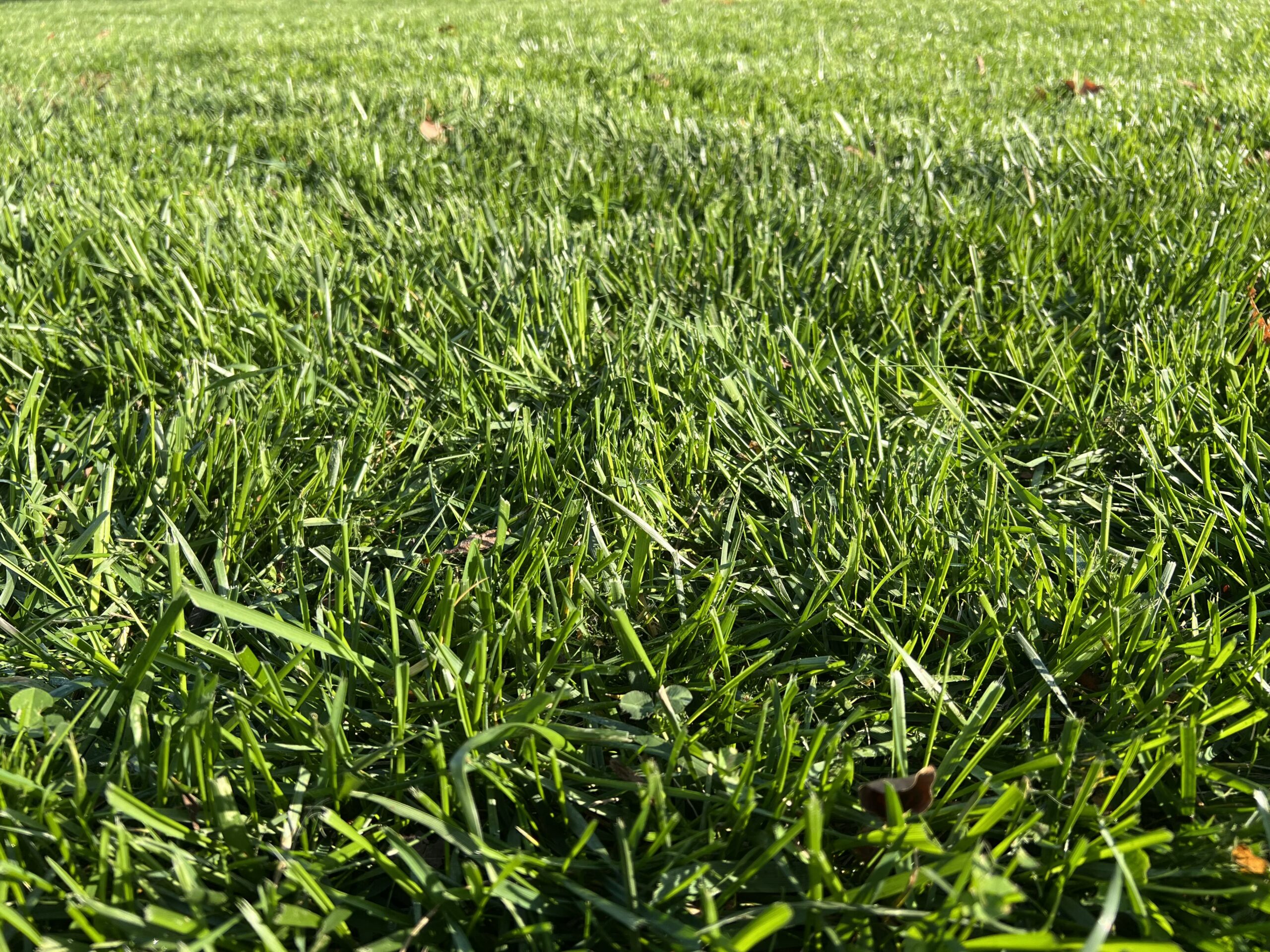Early Spring Lawn Care sets the tone for the entire year. If you’re trying to have top notch turf, there’s really two times of year that you really need to put the work in. That being early spring and late fall. Hammer these two times of year and everything else will be smooth sailing and gravy.
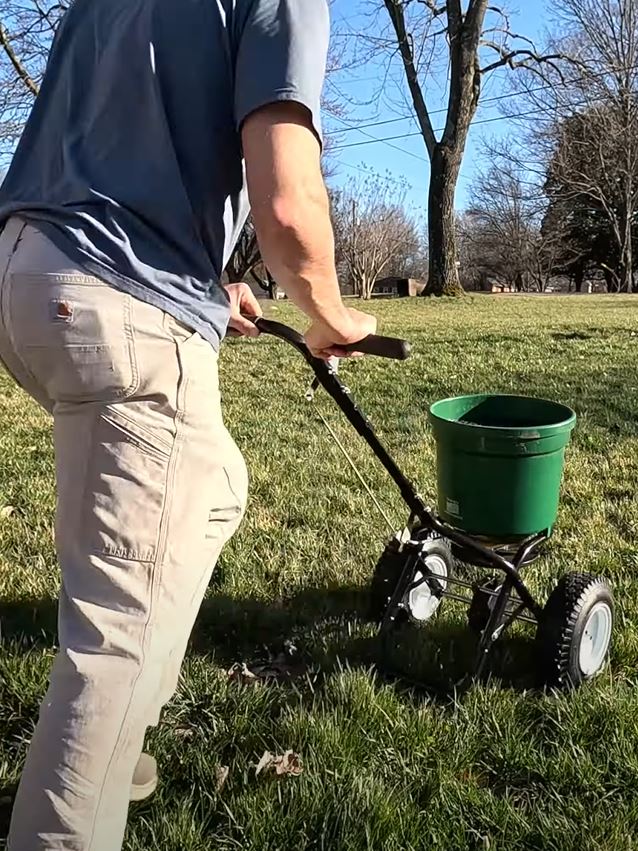
But miss these times or don’t do the right application and you’ll be fighting an uphill battle the rest of the year. You’ll be working ten times as hard to keep your yard green, thick, and without weeds suffocating your beautiful grass.
That may sound intimidating, but it’s really simple and just a few quick steps to help you set yourself up for success for the year. In this article, I’m going to take you through my process for early spring lawn care.
And PS – If you prefer video content, I put together a video walkthrough on what I do on my Youtube Channel.
Here’s our quick step-by-step early spring lawn care routine:
- Clear debris off of your lawn’s surface
- Prepare your equipment for the year
- Apply pre-emergent to prevent weed growth
- Water-in pre-emergent
Our Early Spring Lawn Care Schedule: Step-by-Step
If it is finally starting to warm up where you live and the snow is melting off your lawn – you’ve got work to do before the grass starts growing again. Below is our process for
Step 1: Clear off any debris in your yard
The first step in your spring lawn care routine is to make sure your yard is ready to receive some of the pre-emergent, fertilizer, post emergent, and other products you’re going to lay down in the coming weeks.

To clear the canvas, grab a rake and scoop up any excess leaves that are laying on top of your yard. Make sure to pick up sticks, pine cones, dog doo, and whatever else might get in the way of your yard growing once things start germinating.
If it’s been more than 12 months since you’ve dethatched your yard, you may want to consider dethatching to pick up excess material on top of your soil. Some thatch is good, but too much can prevent your yard from taking up product.
Which leads us into step number tw0.
Step 2: Make sure your equipment is in top shape
Admit it. You’ve been there. You finally have one free weekend where you don’t have to be at a family function, or a holiday, or something else and you’ve dedicated a few hours to lawn care.
Only to realize that you don’t have gas for your tools, you forgot to charge up your batteries, or you have some kind of maintenance issue. Now you have to spend more time or money (or both) fixing those issues or waiting for batteries to charge.
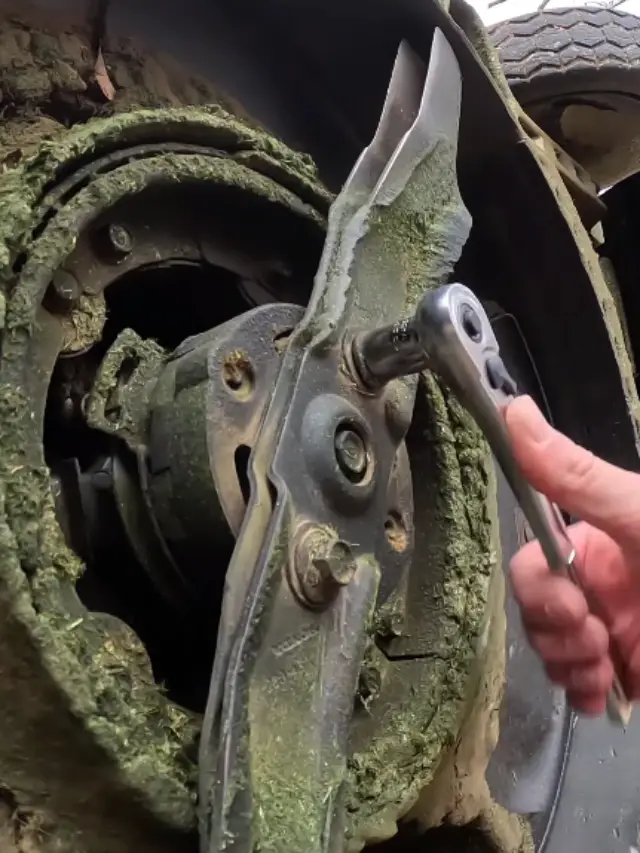
Obviously you can do all this before step 1, but I like to spend the first weekend in early spring cleaning up the canvas and checking the equipment, then actually using the equipment and applying the product the following weekend. You can sharpen your mower blades as well to make sure they’re ready to go.
If you have gas powered equipment, make sure you’re emptying out old gas (you should do this at the end of a season anyway, so hopefully it’s empty). If you have battery powered equipment, make sure those are charged up ahead of time.
Step 3: Apply pre-emergent
This is arguably the most important step in this lawn care routine. That’s applying either a liquid or granular pre-emergent (PE). The timing of this step is crucial.
I’m in Tennessee, and in the south the biggest indicator when to apply PE is by looking at when you start seeing Forsythia buds. These pups tend to come out when it gets to around 55 degrees Fahrenheit. This is the temperature when things start to germinate, bud, and grow for the new season.

In anticipation of this, I like to lay down my pre-emergent a little before this time, when it’s around 50 degrees and climbing.
The pre-emergent I like to use is Barricade by The Andersons. I really like this product because it covers a broad range of weeds and unwanted grasses that we’re trying to keep out of the yard so we have a nice, uniform, green lawn. It prevents pretty much everything we don’t want, but it also doesn’t have any fertilizer product in it.
In the early spring and late fall, we’re really not trying to promote any growth. That will happen organically as the season goes on. What’s important is just preventing the unwanted weeds from taking a stronghold in our yards.
If you’re unsure of how much to use, a cool and free online tool is measuremylawn.com. This uses satellites see your house, then you can draw a perimeter around your yard, and it will tell you how much acreage you have. Then all you have to do is read the bag of pre-emergent, fertilizer, grass seed, post-emergent, or whatever else to see how much you need.
Once you know the size of your yard and how much product you’ll need, use a simple broadcast spreader to set out your pre-emergent and get to walkin’.
Step 4: Water in the pre-emergent
Now that everything is cleared and you’ve set our your pre-emergent, the final step is to just water in your yard. If you have an irrigation system, just set out your pre-emergent before your next cycle. If not, you can either set out some sprinklers, or just do step 3 a day or so before you know it’s going to rain. Around this time of year, most parts of the country tend to get a lot of rain, so this shouldn’t be too hard to do.
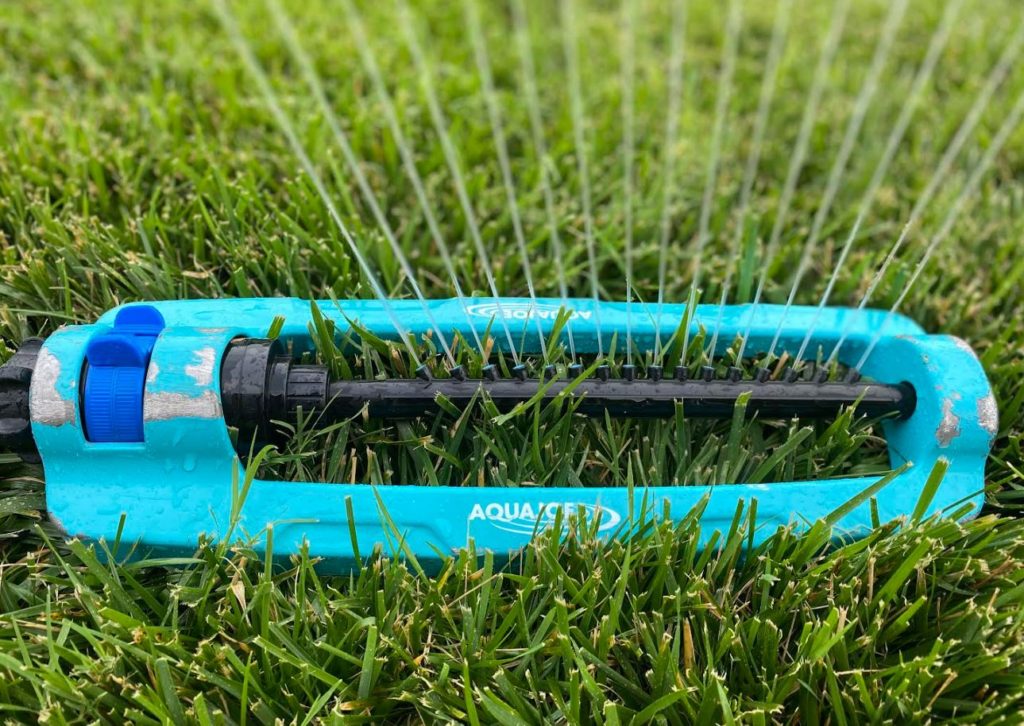
Bottom Line: Using our early spring lawn care schedule
To summarize the 4 step guide for early spring lawn care, all you have to do is check your tools, prep your canvas, lay out pre-emergent, and water it in.
Some tools you might need are a dethatcher (optional), a broadcast spreader, and maybe a sprinkler. Like I said before, I review lawn tools for a living and have done reviews on all of these products, so I’ve linked to each of our top articles reviewing these products too.
If you found this article helpful, make sure to subscribe to our Youtube Channel for more lawn care DIY tips, exclusive offers on products, and get heads up on deals.
Why we created The Lawn Review
The reason we started the Lawn Review in the first place was because we had so much trouble trying to find reasonable, understandable, honest reviews for lawn equipment. And they aren’t cheap! After hours and hours of research, trying products and returning them, and messing up our yards – we started this site.

As people who had to learn the hard way, we want you to know exactly what you are signing up for before you purchase a piece of equipment. That’s why we are committed to providing honest, easy-to-understand reviews that mean something.
There’s tons of great resources out there for people who really like to nerd out on lawn care and get into the fine details and science behind lawn care. If that’s your jam, guys like Ryan Norr and Lawn Care Nut will be right up your alley.
As for me and most readers of this blog, we don’t need to know how the sausage is made. Just tell me which sausage (er.. Lawn tools) is best & how to use the sausage… (that’s what she said…? Idk, there’s an explicit joke in there somewhere)

